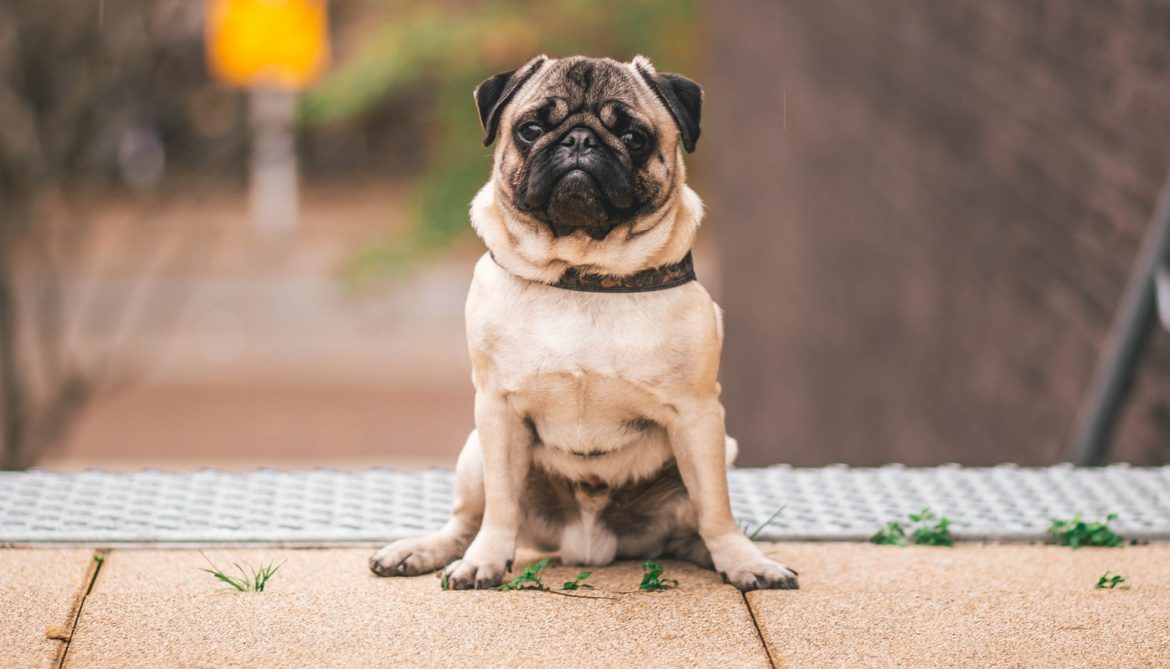This cartoon-like dog is one of India’s most favourite breeds. Their bulgy brown eyes, curly tail, adorable wrinkles, entertaining expressions, mischievous personality – what’s not to like? Pugs have almost paved their way to be the perfect lap dog! Pugs come in fawn, apricot fawn, black, and silver fawn. Their brachycephalic skull is what adds to their adored look; however, it does have its cost – respiratory problems. Pugs, as they say, have the mushiest of hearts!
History
Can you believe that this pooch was once a guard dog? Over 2000 years ago, Chinese emperors used the breed for protection. In fact, the wrinkles on their forehead are meant to form the Chinese letters that spell ‘prince’. Legend has it that the word ‘Pug’ comes from the Latin word ‘Pugnus’, which translates to ‘fist’ – in resemblance to the dog’s face as a clenched fist.
About the Breed
Nutrition
High-quality dog food that is appropriate for their age and activity level along with supplementation is best to keep your Pug in the best of health. The saying ‘Pugs live to eat, and eat to live’ has never been more true. However, as much as we enjoy sharing the love for food, Pugs can put on weight almost too easily. So, it is best to limit how much we feed them and opt for wholesome food that is more filling in comparison to food that might provide more temporary energy than satiety. If you live in a hot climate, be sure to have fresh, clean water at all times and encourage your Pug to drink lots of water so as to not overheat. Because of their brachycephalic skull, Pugs can overheat and suffer from heat strokes. If water isn’t a favourite, try wet food diets.
Grooming
Pugs shed despite their short coat. It is best to brush and de-shed them every day. Besides this, you can trim their nails, clean their ears, and bathe them once in fourteen days. Sometimes, because of all the wrinkles, Pugs can bad body odour, for which you can use a dry shampoo.
Exercise
Exercise must be limited to walking and playing with toys since any other exercise can take a toll on their breathing. Pugs need to be exercised for one hour a day; however, it is best to divide the one hour into four walks of fifteen minutes each to prevent unnecessary strain on the lungs and heart.
Training
Pugs are easy to train and eager to please. With a little bit of positive reinforcement, they will be all over you and ready for the next command/trick. It is good to challenge your Pug with different tricks to see how far he can work his brain to execute it.
Health
Pugs suffer from corneal ulcers, dry eyes, floating kneecaps, obesity, hypothyroidism, hip dysplasia, heart disease, and several breathing problems. Hence, it is best to take them for routine check-ups, feed just the right amount, and monitor daily exercise.
Temperament
There might not be a better family dog! Pugs thrive in any family and make the most of the people and animals around them – filling their hearts with unconditional love.
Is this the right breed for me?
Pugs are perfect for apartment living
They do not require much exercise
They are quiet dogs who bark only when necessary
Pugs are family-friendly dogs
They are easy to potty train
Pugs are obedient and respond well to training
Why might the Pug be unsuitable for me?
Pugs suffer from respiratory disorders somewhere along the course of life
They do not like to be left alone
Pugs shed – a lot!
They have trouble walking on a leash.
Pugs aren’t the healthiest of breeds.
Pugs are one of the perfect canine companions out there! Their charming personality, enthusiastic temperament, and entertaining mannerisms are what led them to the top of the favourite small breeds.
,

